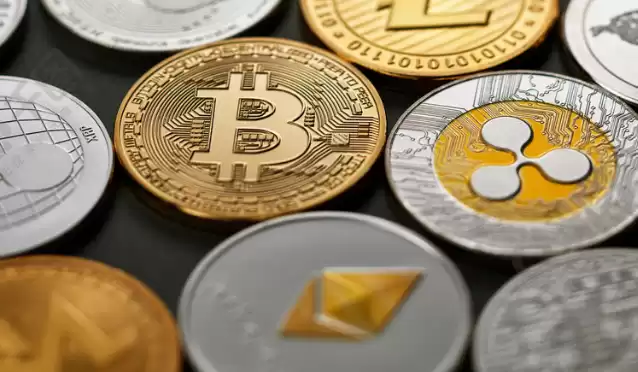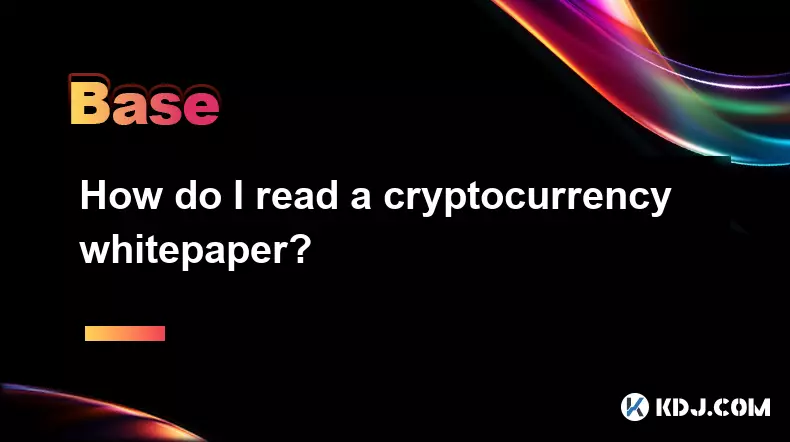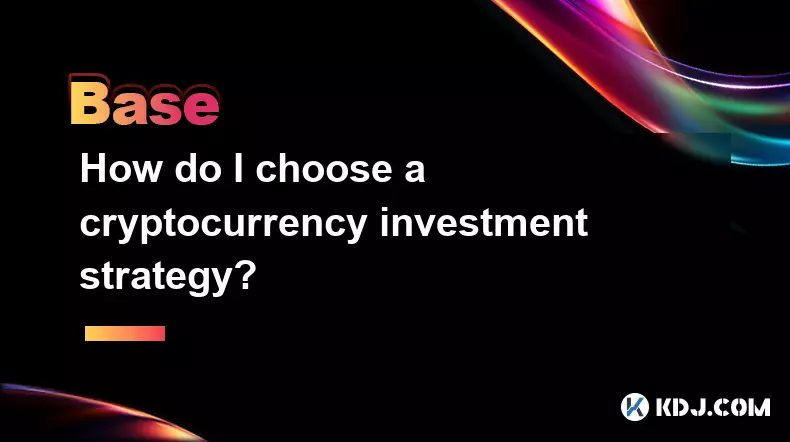-
 bitcoin
bitcoin $121833.232455 USD
-0.63% -
 ethereum
ethereum $4394.437030 USD
-2.00% -
 tether
tether $1.000570 USD
0.04% -
 bnb
bnb $1255.553465 USD
-3.73% -
 xrp
xrp $2.814944 USD
-1.59% -
 solana
solana $221.835346 USD
-2.40% -
 usd-coin
usd-coin $0.999869 USD
0.01% -
 dogecoin
dogecoin $0.249495 USD
-1.32% -
 tron
tron $0.336905 USD
-1.24% -
 cardano
cardano $0.816464 USD
-1.69% -
 chainlink
chainlink $22.130946 USD
-1.27% -
 hyperliquid
hyperliquid $44.208522 USD
-3.46% -
 ethena-usde
ethena-usde $1.000521 USD
0.02% -
 sui
sui $3.422897 USD
-2.51% -
 stellar
stellar $0.380164 USD
-1.31%
How Does Alpha Work With Beta?
In portfolio construction, a balance between alpha (active management component) and beta (market sensitivity) is essential, with a desirable portfolio exhibiting high alpha and low beta for optimal returns and reduced risk.
Oct 16, 2024 at 03:15 pm

Alpha and beta represent two important Greek letters that often appear in finance and investment contexts. They play crucial roles in asset management and portfolio construction. Here's an examination of how alpha and beta work together:
1. What is Alpha?Alpha measures the excess return of an investment over the benchmark.
It quantifies the active management skill of a portfolio manager.
A positive alpha indicates outperformance relative to the benchmark, while a negative alpha indicates underperformance.
Beta measures the systematic risk of an investment relative to the market.
It represents the sensitivity of the investment's returns to the movements of the overall market.
A beta of 1 indicates that the investment moves in sync with the market, while a beta greater than 1 reflects greater volatility than the market, and a beta less than 1 suggests lower volatility than the market.
Alpha seeks to capture the active management component of an investment portfolio, while beta reflects the systematic risk that an investor is taking on.
Investors need to balance alpha and beta to achieve optimal returns and risk management.
A portfolio with a high alpha and low beta is desirable, as it offers both excess returns and reduced overall risk.
Risk-adjusted return is a measure that considers both alpha and beta to evaluate portfolio performance.
The Sharpe ratio, which divides the alpha by the standard deviation of excess returns, is a common risk-adjusted return measure.
A high Sharpe ratio indicates a portfolio with superior risk-adjusted return.
Investors can construct portfolios with varying combinations of alpha and beta.
A conservative portfolio might have a lower beta and a lower alpha, while an aggressive portfolio might have a higher beta and a higher alpha.
The optimal allocation between alpha and beta depends on the investor's individual risk tolerance and time horizon.
Consider a portfolio manager who invests in a stock fund with an alpha of 5% and a beta of 1.1. This means that the fund has the potential to generate a return 5% higher than the benchmark, but it also has a higher risk than the benchmark. If the market rises by 10%, the portfolio is expected to rise by 11% (10% * 1.1).
Conclusion:Understanding the relationship between alpha and beta is crucial for effective portfolio management. While alpha represents the potential for excess returns, beta measures the systematic risk involved. By balancing alpha and beta, investors can construct portfolios that meet their specific goals and risk appetite.
Disclaimer:info@kdj.com
The information provided is not trading advice. kdj.com does not assume any responsibility for any investments made based on the information provided in this article. Cryptocurrencies are highly volatile and it is highly recommended that you invest with caution after thorough research!
If you believe that the content used on this website infringes your copyright, please contact us immediately (info@kdj.com) and we will delete it promptly.
- Meme Coins, ETFs, and Crypto Regulations: Navigating the Wild West of Digital Finance
- 2025-10-10 10:25:15
- HYPE, PENGU, and BlockDAG: Decoding Crypto's Latest Moves
- 2025-10-10 10:25:15
- Robinhood, Zora, and the Web3 Creator Revolution: A New York Minute on Tokenized Futures
- 2025-10-10 10:30:01
- Trump, Super Bowl, and Halftime: A Wild 2025 Ride
- 2025-10-10 10:30:01
- Cardano, XRP, and DeFi Integration: A Bombshell Development?
- 2025-10-10 08:25:17
- VeChain's Market Cap Dip: Can VET Stage a Recovery?
- 2025-10-10 10:30:01
Related knowledge

How does cryptocurrency achieve decentralization?
Sep 30,2025 at 04:37am
Understanding the Foundation of Decentralization in Cryptocurrency1. Cryptocurrency achieves decentralization primarily through the use of blockchain ...

What are some common methods of cryptocurrency market manipulation?
Sep 27,2025 at 02:55am
Wash Trading and Its Impact on Market Perception1. Wash trading involves an individual or entity simultaneously buying and selling the same cryptocurr...

How do I read a cryptocurrency whitepaper?
Sep 27,2025 at 05:54am
Understanding the Structure of a Cryptocurrency Whitepaper1. Begin by identifying the executive summary, which outlines the project’s core vision and ...

Can I recover lost cryptocurrency?
Sep 25,2025 at 08:18am
Understanding the Nature of Cryptocurrency Loss1. Cryptocurrency operates on decentralized networks, meaning there is no central authority to reverse ...

How do I choose a cryptocurrency investment strategy?
Sep 27,2025 at 03:55pm
Understanding Risk Tolerance in Crypto Investing1. Assessing personal risk tolerance is a foundational step when entering the cryptocurrency market. V...

How can I earn passive income from cryptocurrency?
Sep 23,2025 at 10:18am
Staking Cryptocurrencies for Regular Returns1. Many blockchain networks operate on a proof-of-stake (PoS) consensus mechanism, allowing users to earn ...

How does cryptocurrency achieve decentralization?
Sep 30,2025 at 04:37am
Understanding the Foundation of Decentralization in Cryptocurrency1. Cryptocurrency achieves decentralization primarily through the use of blockchain ...

What are some common methods of cryptocurrency market manipulation?
Sep 27,2025 at 02:55am
Wash Trading and Its Impact on Market Perception1. Wash trading involves an individual or entity simultaneously buying and selling the same cryptocurr...

How do I read a cryptocurrency whitepaper?
Sep 27,2025 at 05:54am
Understanding the Structure of a Cryptocurrency Whitepaper1. Begin by identifying the executive summary, which outlines the project’s core vision and ...

Can I recover lost cryptocurrency?
Sep 25,2025 at 08:18am
Understanding the Nature of Cryptocurrency Loss1. Cryptocurrency operates on decentralized networks, meaning there is no central authority to reverse ...

How do I choose a cryptocurrency investment strategy?
Sep 27,2025 at 03:55pm
Understanding Risk Tolerance in Crypto Investing1. Assessing personal risk tolerance is a foundational step when entering the cryptocurrency market. V...

How can I earn passive income from cryptocurrency?
Sep 23,2025 at 10:18am
Staking Cryptocurrencies for Regular Returns1. Many blockchain networks operate on a proof-of-stake (PoS) consensus mechanism, allowing users to earn ...
See all articles

























![Web3 Crypto Market Morning Report: Fomo on the Bnb chain continues, Binance launches the chain-sweeping platform Meme Rush, the market value of Xiuxian exceeds 40 million U.S. dollars, OK Binance business war begins [Vic TALK Issue 1437] Web3 Crypto Market Morning Report: Fomo on the Bnb chain continues, Binance launches the chain-sweeping platform Meme Rush, the market value of Xiuxian exceeds 40 million U.S. dollars, OK Binance business war begins [Vic TALK Issue 1437]](/uploads/2025/10/10/cryptocurrencies-news/videos/web-crypto-market-morning-report-fomo-bnb-chain-continues-binance-launches-chainsweeping-platform-meme-rush-market-xiuxian-exceeds-dollars-binance-business-war-vic-talk-issue/68e861c5dbd1c_image_500_375.webp)
















































